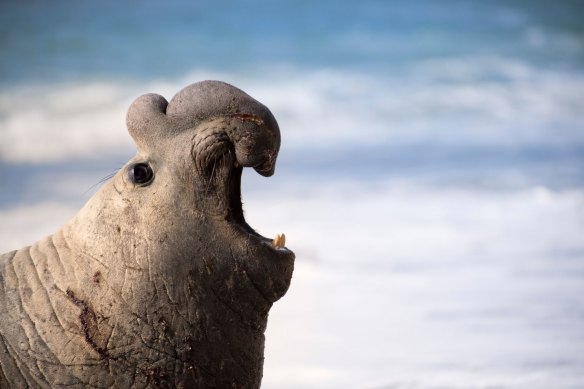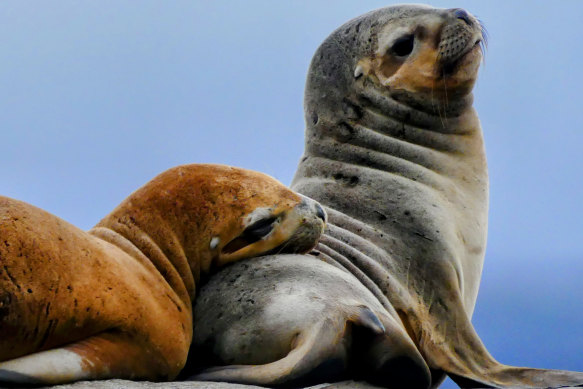
In 2022 and 2023, H5N1 killed more than 30,000 sea lions in Peru and Chile, along with some porpoises, dolphins and otters. It travelled down the Pacific Coast and then marched back up the Atlantic coast through Argentina and into Uruguay and Brazil.
In October, there was a “tsunami of virus” in Argentinian Patagonia that wiped out more than 17,000 elephant seals, Uhart said, adding that those numbers make it unlikely that the virus jumped from a bird to a sea mammal each time.

An adult male southern elephant seal in Valdes Peninsula, Patagonia, Argentina. Credit: Alamy
Mammal-to-mammal transmission is “nearly the only explanation of how it went around the entire southern tip of the continent and continued to spread,” she said. “Honestly, there are not very many more ways this could have happened.”
In the new study, Uhart and her colleagues studied virus samples from elephant seal pups and terns. Their genetic analysis suggests that H5N1 jumped at least three times from wild birds to marine mammals on the Pacific Coast of South America, and then evolved to spread between elephant seals.
The team presented some of these data at small meetings, but other researchers were resistant to the idea that sea mammals were infecting one another, Uhart said.
Some scientists suggested that the mammals were all infected by birds. But a majority of terns died about three weeks after the mass deaths in sea lions and elephant seals.

Sea lion pups in Patagonia.Credit: Bob Drogin for The Washington Post
In fact, Uhart and her colleagues found evidence suggesting that the virus jumped from sea mammals back into birds – an unwelcome development because infected birds can disperse the virus wherever they migrate.
The researchers found H5N1 in the windpipes, lungs and brains of carcasses of sea mammals. It is unclear whether the virus spread through air or through some other route. But in lab experiments, the virus has been shown to be transmissible through air and via direct contact among ferrets.
Bird flu virus taken from the sea animals contained 18 mutations that enabled it to infect and spread among mammals more easily, and enhanced the severity of the disease, the researchers found.
“The sheer number of mutations” is cause for concern, said Dr Malik Peiris, a virus researcher and bird flu expert at the University of Hong Kong, who was not involved in the work.
In contrast, there are hardly any mutations that represent adaptation to mammals in the infected cows. “But this could be a matter of time,” Peiris said.
None of the mutations was found to affect hemagglutinin, or HA, the viral protein that latches on to receptors in humans and animals. Other studies have suggested that changes in HA are crucial for H5N1 to spread among people and may precede mutations in other parts of the virus.
But “even though the HA has not changed, you have other mutations that may be of concern,” said Agustina Rimondi, a virus expert at the INTA-CONICET virology institute in Buenos Aires, Argentina, who led the genetic analysis.
Every infection affords the virus new opportunities to evolve and to acquire mutations that may allow it to more easily infect people, she said.
Among the mutations found in virus from sea mammals are two, D701N and Q591K, that alter an enzyme the virus needs to replicate. Both mutations are thought to be alternatives to another mutation called E627K, which is believed to be a key change needed for the virus to infect mammals.
The mutations merit further investigation, but they may not be followed by the changes needed in HA and do not necessarily portend transmission among people, said Richard Webby, an influenza expert at St Jude Children’s Research Hospital, who was not involved in the work.
“The HA receptor changes make it easier for the others to emerge, but I don’t think it works the other way around,” he said.
Webby cautioned against thinking of all mammals as a homogeneous group.
“I don’t think sea mammals are the same as humans, in terms of susceptibility,” he said. “Maybe replication in sea mammals doesn’t drive the virus to be more able to infect humans.”
This article originally appeared in The New York Times.



























